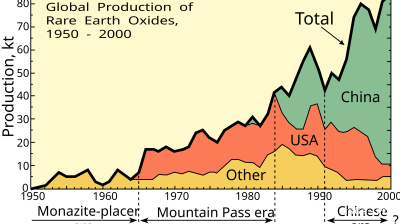Sri Lanka’s central bank is expected to keep interest rates unchanged for the third consecutive meeting on May 22, as it aims to sustain economic recovery while assessing the potential impact of US tariff actions, according to a Reuters poll.
The country's economy grew by 5% in 2024, outperforming expectations and marking a significant turnaround after a deep financial crisis triggered by a severe shortage of US dollars three years ago.
All 12 analysts and economists surveyed by Reuters anticipate that the Central Bank of Sri Lanka (CBSL) will maintain its current policy stance. The decision is seen as a response to moderate inflation, steady growth momentum, and lingering uncertainty surrounding US trade policy.
The US administration under President Donald Trump imposed 44% tariffs on Sri Lankan exports, impacting approximately $3bn worth of annual trade. These measures have raised concerns over their potential to stall the country’s ongoing economic recovery. The tariffs have since been suspended for three months, and officials from both governments are engaged in talks to improve bilateral trade ties, according to Reuters.
Analysts noted that although inflation is currently below expectations, the CBSL may opt to delay any policy easing until there is greater clarity on global developments, particularly regarding the final outcome of the US tariff decision.
Sri Lanka reached a staff-level agreement with the International Monetary Fund (IMF) in April as part of the fourth review of its $2.9bn bailout programme. However, final approval from the IMF’s executive board will require the government to raise electricity prices—a move expected to influence inflation trends, Reuters reported.
Year-on-year inflation stood at minus 2% in April but is projected to stay well below the CBSL’s 5% target, even after the anticipated power tariff adjustments, analysts said.
The World Bank, in its most recent report, maintained its 2025 growth projection for Sri Lanka at 3.5%, unchanged from the previous estimate in October. Reuters reported that this stability in forecast reflects cautious optimism about the country’s economic trajectory.
Data

Fitch upgrades Turkey’s Ziraat, Vakifbank and TSKB to three notches below investment grade
Says authorities have improved ability to support banking sector in FX in line with sovereign's better reserves position.

European Commission cuts Romania’s growth outlook in half as fiscal tightening weighs on economy
Downward revision reflects Romania’s fiscal slippage in 2024-25 and the subsequent shift to a more contractionary fiscal stance.

Korean export slowdown to weigh on economic recovery
South Korea’s economic rebound is set to be held back by faltering overseas demand, according to new analysis by Fitch Ratings, which warns that weaker exports will act as a brake on growth prospects.




